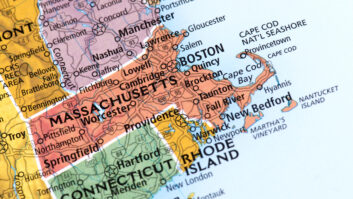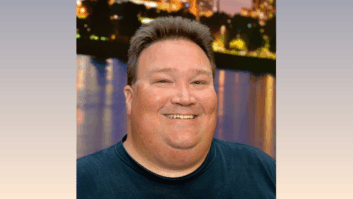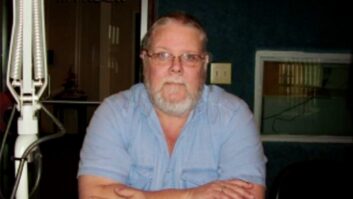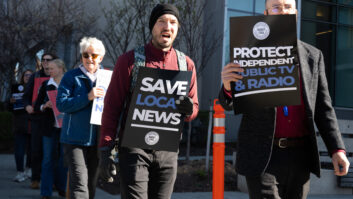Nick’s Signal Spot is a new feature in which Nick Langan explores RF signals, propagation, new equipment or related endeavors.
First, the broken white lines on the Pennsylvania Turnpike asphalt become solid.
Then comes the sign advising you to turn on your headlights.
And finally, the cacophony of sound from riding over the rumble strips.

I’ve made the trip through the four Pennsylvania Turnpike tunnels hundreds of times, as both a passenger and a driver. Growing up in Ohio but with family roots in New Jersey, it was simply a necessity to traverse the Keystone State’s toll road — at least to get to South Jersey.
The tunnels were always a highlight — a sign that the winding, sometimes monotonous journey on the Turnpike was nearing its eventual completion.
But there was always one source of disenchantment: the complete loss of all radio signals inside the long tunnels.
Not only would AM and FM signals instantly vanish as soon as we went under the Allegheny Mountain in the Laurel Highlands of Somerset County, for example, but coming out the other side, the FM dial would often sound dramatically different.
On the west side, most Pittsburgh FM stations come in relatively well. Once on the eastern side, beyond the approximately 2,300-foot mountain, those stations are gone without a trace — aside from a handful of isolated pockets.
I’ve never been there, but I imagine a similar effect takes place on either side of the Eisenhower Tunnel on Interstate 70 west of Denver, entering the Rocky Mountains.
Our assistant editor and Colorado resident, Elle Kehres, may need to conduct a site survey.
The loss of signals made me curious about tunnels in urbanized areas that don’t lose reception — systems that keep the radio alive even underground.
Let’s, well, dig a hole!
No license required

Cities like New York, Boston, Seattle, Baltimore, Detroit–Windsor and Pittsburgh all have heavily trafficked tunnels, either under hills or bodies of water.
They are also common in Europe — as we’ve written about in the past.
In the case of New York’s Holland and Lincoln Tunnels, motorists often crawl through traffic — a captive audience — where AM and FM signals otherwise couldn’t reach.
I’ve heard the systems in the Hudson River tunnels myself and I had wondered how they worked.
I contacted Dan Braverman, founder and president of the Philadelphia-based Radio Systems. His company — a producer of broadcast consoles and low-power transmitters — has operated for more than 50 years and he has overseen two “tunnel radio” installations.
My first question for Dan was why I could not locate licenses in the FCC database for tunnel rebroadcasts.
That’s because they do not exist.
The FCC has a specific subpart of its Part 15 rules for tunnel radio systems. Without a license, a broadcast can take place inside a tunnel using what the commission describes as an “intentional radiator.”
Dan said the most common application is through what’s known as leaky feeder cables, similar to the carrier current systems once common on college campuses.
[Related: “The End of Carrier Current?”]
I researched deeper.
A 1980 report prepared for the U.S. Department of the Interior’s Bureau of Mines evaluated leaky feeders for underground mines. It noted that an early use of leaky cable was at the George Washington Bridge in 1940, when William Halstead used it to communicate with motorists on AM broadcast frequencies. It was temporarily implemented in the Lincoln Tunnel from 1951–1955. “It was suspended at that time only because of concern that the radio signals might detonate blasting caps during the construction of a supplementary tunnel,” the report said.
Halstead also petitioned the FCC to authorize FM subcarriers in 1955.
The technology improved over time. By 1983, the New York Times reported that 30 AM stations would rebroadcast their signals inside the Lincoln Tunnel, using two radiating transmission lines installed by the New York–New Jersey Port Authority. The project cost about $1.6 million.
The Holland Tunnel received an AM rebroadcast system in 1985.
It wasn’t until 2001 that both the Lincoln and Holland tunnels also received FM rebroadcast capabilities.
Tunneling in the night

Braverman’s Radio Systems installed systems for Boston and Seattle’s Sea-Tac Airport Tunnel in the late 1990s. Belden manufactured “free-rate” cable, engineered to be especially leaky, he said.
“We stretched down coax and fastened it to the walls of this dirty tunnel in the middle of the night,” Braverman recalled about the Boston project. Traffic had to be diverted to a single lane during installation.
In Boston’s case, a small studio was built for the owner of the tunnel system, allowing him to interrupt FM broadcasts — with permission — to insert his own audio content, which included commercials and local information.
At Sea-Tac, Braverman said, the install allowed replacement of regular FM programming with traveler information and parking updates for the airport.
Today, the analog signals of Boston’s AM and FM stations are still repeated inside Beantown’s Ted Williams and O’Neill tunnels, according to Southern New England radio observer Jeff Lehmann.
Other tunnels have similar setups. The Jan. 1, 1986, edition of Radio World cited CKLW(AM)’s use of a leaky cable system in the tunnel under the Detroit River.
Rebroadcasts and advisory inserts
Tunnel radio has had different use cases. Some setups aim to rebroadcast full AM and FM signals while others are used for advisory messages.
David Gleason’s World Radio History proved invaluable for uncovering some of the early setups.
According to a Feb. 15, 1986, Radio World article, the Dewey Square Tunnel in Boston used an IGM Instacart system to override signals from local AM and FM stations. “In the Dewey Tunnel, seven station signals are overridden for the limited 10 seconds to four minutes that a motorist is in the tunnel,” the article said. Motorists would hear traffic announcements, PSAs and paid commercials instead.
The Port Authority’s systems in New York also allow insertion of advisory messages over AM and FM rebroadcasts, though a 2019 WCBS(TV) report suggested that those announcements were being scaled back after listener complaints of excessive repetition.
Not always smooth
Tunnel systems haven’t always worked flawlessly. The Maryland Transportation Authority originally installed a system to rebroadcast AM stations in Baltimore’s Inner Harbor Tunnel in the mid-1970s, according to the Baltimore Sun. But it never worked all that well and was removed during a later tunnel refurbishment. In 1994, the Sun reported that a Baltimore electronics company was awarded about $200,000 to install a new AM/FM rebroadcast system that also supported emergency message overrides.
And sometimes, service just goes out altogether. WABC(TV) reported in 2018 on an outage of AM signals in the Hudson River tunnels that lasted for “months, possibly years.”
I’d love to hear about any tunnel broadcasts you’ve either contributed or encountered. And the next time you are traversing a tube, hit the scan button on your car radio and see if it stops!
Radio World welcomes letters to the editor on this or any story. Email [email protected].







